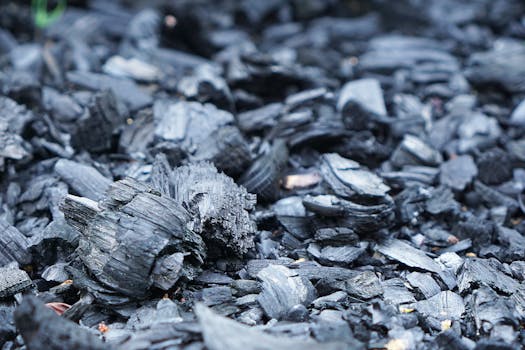Producing Biochar from Plant Waste: Straw, Dry Leaves, and Wood Chips
Biochar, a carbon-rich product derived from the pyrolysis of organic materials, has gained significant attention in recent years for its potential to improve soil health, sequester carbon, and manage agricultural waste. This article explores the production of biochar from common plant waste materials such as straw, dry leaves, and wood chips, highlighting the benefits, processes, and real-world applications of this sustainable practice.
Understanding Biochar and Its Benefits
Biochar is produced through the thermal decomposition of organic matter in the absence of oxygen, a process known as pyrolysis. This process not only converts waste into a valuable product but also helps in mitigating climate change by sequestering carbon that would otherwise be released into the atmosphere. The benefits of biochar include:
- Soil Improvement: Biochar enhances soil fertility by increasing nutrient retention, improving soil structure, and promoting microbial activity.
- Carbon Sequestration: By converting biomass into biochar, carbon is stored in a stable form, reducing greenhouse gas emissions.
- Waste Management: Utilizing agricultural and forestry waste for biochar production helps in reducing landfill use and managing waste sustainably.
- Water Retention: Biochar can improve soil’s ability to retain water, which is particularly beneficial in drought-prone areas.
Raw Materials for Biochar Production
Straw, dry leaves, and wood chips are abundant sources of biomass that can be effectively converted into biochar. Each material has unique properties that influence the characteristics of the resulting biochar.
Straw
Straw, a byproduct of cereal grain harvesting, is often underutilized. It is rich in carbon and can be converted into biochar through pyrolysis. The process typically involves:
- Collecting straw from fields post-harvest.
- Drying the straw to reduce moisture content.
- Feeding the dried straw into a pyrolysis reactor.
Studies have shown that straw-derived biochar can significantly enhance soil fertility and crop yields. For instance, a study conducted in China found that applying straw biochar increased maize yields by up to 30% compared to control plots.
Dry Leaves
Dry leaves are another excellent feedstock for biochar production. They are often abundant in urban and rural areas, making them a readily available resource. The production process involves:
- Gathering dry leaves from gardens, parks, and forests.
- Shredding the leaves to increase surface area for pyrolysis.
- Pyrolyzing the shredded leaves in a controlled environment.
Research indicates that biochar produced from dry leaves can improve soil structure and increase microbial diversity. A case study in Brazil demonstrated that leaf biochar application led to a 25% increase in soil organic matter over two years.
Wood Chips
Wood chips, a byproduct of timber processing and landscaping, are another valuable source for biochar production. The process includes:
- Collecting wood chips from sawmills or landscaping operations.
- Drying the chips to achieve optimal moisture levels.
- Using a pyrolysis unit to convert the wood chips into biochar.
Wood chip biochar is known for its high stability and nutrient retention capabilities. A study in the United States found that wood chip biochar improved soil pH and nutrient availability, leading to enhanced plant growth in agricultural settings.
Case Studies and Real-World Applications
Several initiatives around the world have successfully implemented biochar production from plant waste, demonstrating its viability and benefits:
- Australia: The Australian government has funded projects that convert agricultural waste into biochar, resulting in improved soil health and reduced emissions.
- Germany: In Germany, biochar is being used in urban gardening projects to enhance soil quality and promote sustainable practices among city dwellers.
- United States: Various universities are conducting research on biochar’s impact on crop yields, with promising results leading to increased interest in its commercial production.
Conclusion
Producing biochar from plant waste such as straw, dry leaves, and wood chips presents a sustainable solution to waste management while offering numerous environmental benefits. By enhancing soil health, sequestering carbon, and improving agricultural productivity, biochar stands out as a valuable tool in the fight against climate change. As more research and case studies emerge, the potential for biochar to transform agricultural practices and contribute to a more sustainable future becomes increasingly evident. Embracing biochar production not only helps in managing waste but also paves the way for healthier ecosystems and resilient agricultural systems.
